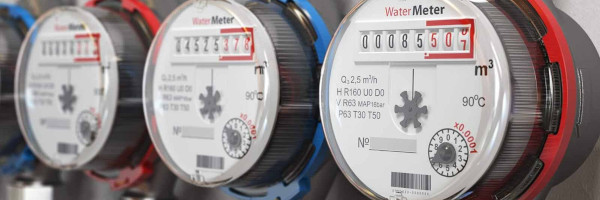Smart Water
| Utility | |||||||||||||||||||||||||||||||
|---|---|---|---|---|---|---|---|---|---|---|---|---|---|---|---|---|---|---|---|---|---|---|---|---|---|---|---|---|---|---|---|

| |||||||||||||||||||||||||||||||
| Sectors | Utility | ||||||||||||||||||||||||||||||
| Contact | Wilfred Pinfold | ||||||||||||||||||||||||||||||
| Topics | |||||||||||||||||||||||||||||||
Activities
| |||||||||||||||||||||||||||||||
- Authors
A smart water system is a type of water management system that uses digital technology to improve the efficiency, cost-effectiveness, and sustainability of water management.
Smart water systems can include a variety of technologies such as sensors, data analytics, and communication networks. These systems can help to improve the collection, treatment, distribution, and management of water resources, as well as reduce the environmental impact of water management.
Examples of smart water systems include:
- Smart metering: This uses sensors to measure and monitor water usage, which can help to identify leaks, detect fraud, and improve billing accuracy.
- Smart leakage detection: This uses sensors and data analytics to detect leaks in water systems and alert repair crews to fix them before they become major problems.
- Smart irrigation: This uses sensors to monitor soil moisture and weather conditions, which can help to optimize irrigation schedules and reduce water usage.
- Smart water quality monitoring: This uses sensors to monitor water quality and detect contaminants, which can help to ensure that water is safe to drink.
- Smart water distribution: This uses data analytics to optimize water distribution and reduce the need for expensive infrastructure.
The benefits of smart water systems include:
- Improved efficiency: Smart water systems can help to improve the efficiency of water management by reducing leaks, identifying inefficiencies, and optimizing water distribution.
- Reduced costs: Smart water systems can help to reduce the costs of water management by reducing the need for expensive infrastructure, identifying inefficiencies, and detecting fraud.
- Increased sustainability: Smart water systems can help to increase the sustainability of water management by reducing water usage, detecting and preventing contamination, and reducing the environmental impact of water management.
- Better data: Smart water systems can provide data on water usage, water quality, and water distribution, which can help to inform better water management policies and strategies.
- Increased reliability: Smart water systems can help to increase the reliability of water supply by reducing leaks, providing real-time monitoring, and early detection of issues in the water distribution network.
Water System
Our planet’s water supply is finite. There is as much water on earth today as there was yesterday, and as much as there ever will be. However, the human population continues to grow, and along with it the need for more fresh water. Further stressed by aging infrastructures, government mandates, and shrinking budgets, managing our planet’s supply of fresh water continuous to be critical to ongoing economic prosperity and social wellbeing.
Non-revenue water (NRW) is defined as treated drinking water that is lost in the distribution system before it can be delivered to customers. Worldwide, more than 32 billion cubic meters of treated water leak from urban water supply systems annually, equivalent to over $18 billion of NRW (source: Itron). Some of these losses, such as leaks are easy to find, but many go undetected, resulting in precious treated water going to waste, lost revenues, and higher production costs. Additional losses associated with theft and poor metering result in lost revenue to the utility. Water losses on the customer side do not affect utility revenue, but they do have a negative impact on sustainable management of precious water resources. An increasing number of water providers are realizing that deploying new technologies such as acoustic leak-sensing across their distribution systems makes both economic and environmental sense. For example, a pipeline leak as small 1/8 inch can lose more than 3,500 gallons per day (gpd) until it is detected and repaired.
Ultimately, the biggest water challenge facing our planet today is the assurance that its most valuable resource can be sustained beyond tomorrow. Just because water resources in a particular area are not in jeopardy today, does not mean they will not be tomorrow. Increasing populations will continue to migrate to, and expect more from, water-rich areas. While Smart City initiatives are finding more efficient ways to sustain the drinking water resource, the demand is ever growing and fresh water supplies will only continue to be strained. The challenge is to ensure they do not become exhausted.
Solutions and Benefits
To meet continually increasing customer expectations, utilities must become more efficient in the way they manage their water resources, handle the demands of their service territory, and engage with their customers. The answer is not to decrease or limit access to fresh water, but rather to increase the efficiency with which water is provided and consumed – decreasing the excess not the access. In other words, to be “resourceful.” We need to understand how and when water is being consumed and/or lost so that decisions can be made today that will positively impact the sustainability of our water resources tomorrow.
This is done through data. But not just data and not just big data. It is through the effective collection of accurate, reliable data and the use of tools to analyze this data. The solutions to managing a community’s water resources include understanding the demands of a utility’s service territory; ensuring sufficient supply is available by more efficiently identifying contributors to NRW (such as system leaks, aging assets, and unauthorized usage); reducing operational expenses and uncovering new revenue streams; and providing customers with access to that same set of information so that they can understand and manage their consumption.
According to the U.S. Environmental Protection Agency (EPA), Water Efficiency is “the use of improved technologies and practices to deliver equal or better service with less water.” The key is access to products and solutions that deliver on that need, and equipping utilities to be able to minimize spending, increase operational efficiencies, and uncover new revenue streams.
Advanced Metering Infrastructure (AMI) and multi-purpose networks, in addition to optimizing the billing process, transform data collected through the system into valuable and actionable intelligence for users across the utility, delivering benefits to the entire organization from billing and customer service to operations, engineering, and distribution, empowering them all to address conservation and resource sustainable opportunities. Delivering the information necessary to make decisions enables a utility to effect change that will have both an immediate and lasting impact on the availability, management, and use of water.
A number of utilities and organizations are already demonstrating their commitment to water efficiency through the use of advanced technologies, implementing solutions that facilitate program objectives. For example, Envision Charlotte in Charlotte, NC has programs in place to encourage the reduction of energy and water consumption in the downtown area of the city (known as Uptown). By bringing awareness to consumption levels through the deployment of advanced technologies capable of collecting hourly interval data, Envision Charlotte is encouraging change in the way energy and water are used and, as a result, showing that businesses can lower the expense of “keeping the lights on.” A key benefit to this program is having more businesses come to the Charlotte area, and therefore more people. This is just one “end” justified by the “means” that demonstrates the power and flexibility of technology capable of satisfying utility challenges around the world.
The City of Madison, WI, thanks to the collection of interval data, was able to establish thresholds for identifying possible customer-side leaks, and then proactively notifying the customer. As a result of the City’s efforts, the threshold for what alerts a possible leak has continually been lowered, or rather fine- tuned, over the past 3 years.
Another example of actuating change within a utility’s operations and customer base is the City of Cleveland, OH. Following the implementation of an AMI, the City has also been able to proactively identify potential customer-side leaks and, in turn, proactively notify their customers. The resulting benefits have been recognized by both the utility and the end customer. Following notification from the utility, Cleveland Water’s customers have the opportunity to minimize the impact to their water bill, and Cleveland Water has seen a significant decrease in the number of bill-related calls to their call center. Furthermore, interval consumption data, coupled with the metered data from district meters, enables utilities to identify potential system losses through District Metering. System losses could be a result of leaks, aging meters, incorrectly sized meters, and/or unauthorized consumption. Having the ability to identify these potential losses prior to rolling a truck results is an immediate, positive impact to the bottom line.
Utilities that are challenged with drought conditions can monitor customer consumption to report on, and enforce, compliance during periods of water restrictions. Knowing when customers are using water, again without having to roll a truck, further decreases operational costs and increases the opportunities to save a valuable resource.
In addition to identifying system losses via the collection of time-synchronized data, with the installation of acoustical leak sensors, a utility can continuously audit the integrity of their distribution system. Knowing when leaks occur, before they damage public or private property, further decreases operational expenses and increases revenue opportunities. With proactive leak detection, utilities are able to reduce the amount of water lost, reduce the cost of repair, and as a result, reduce their NRW percentage.











